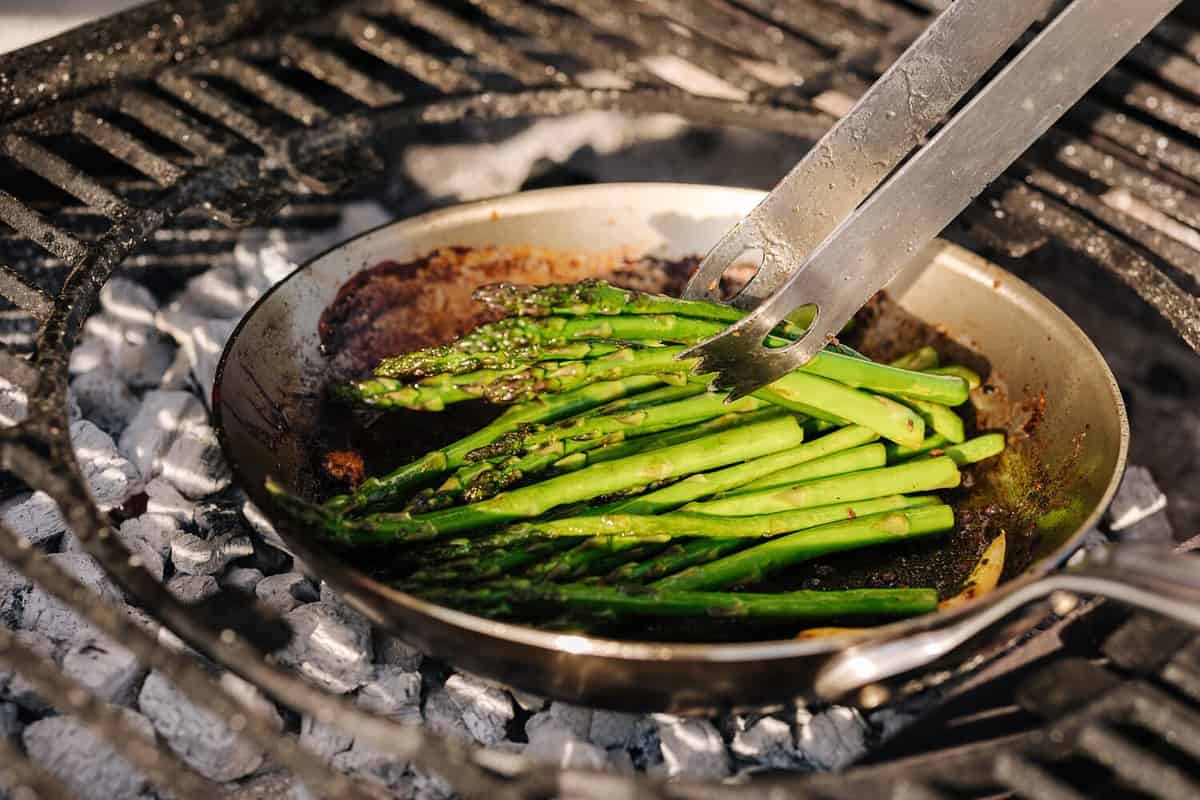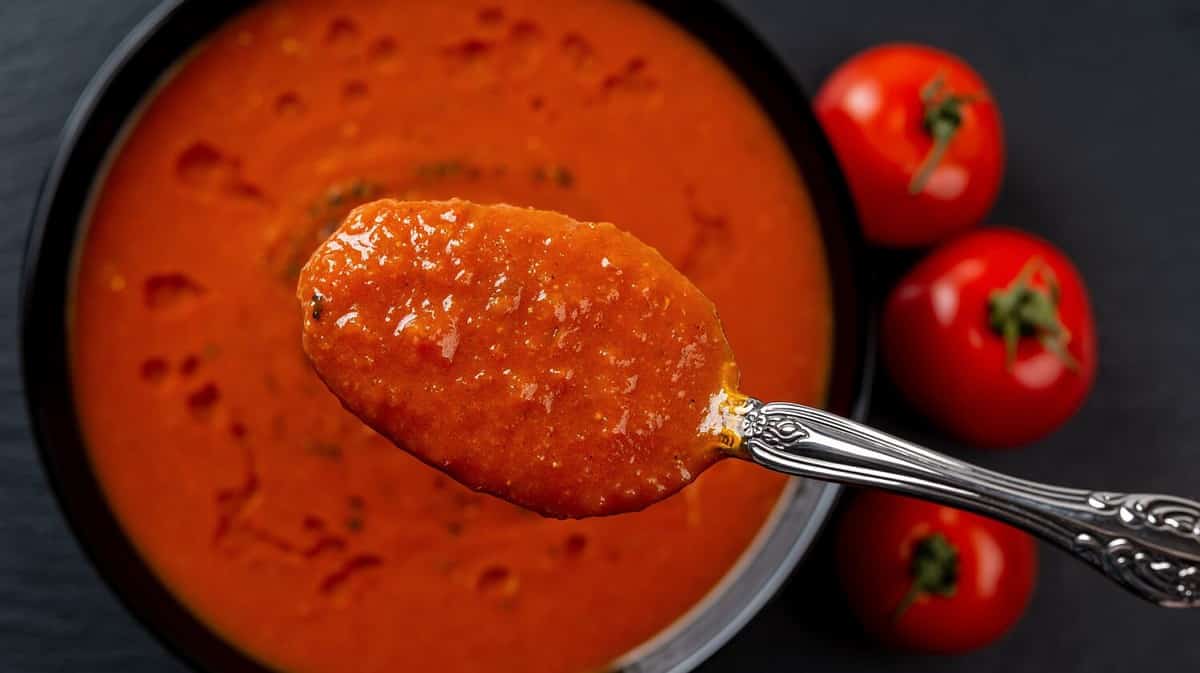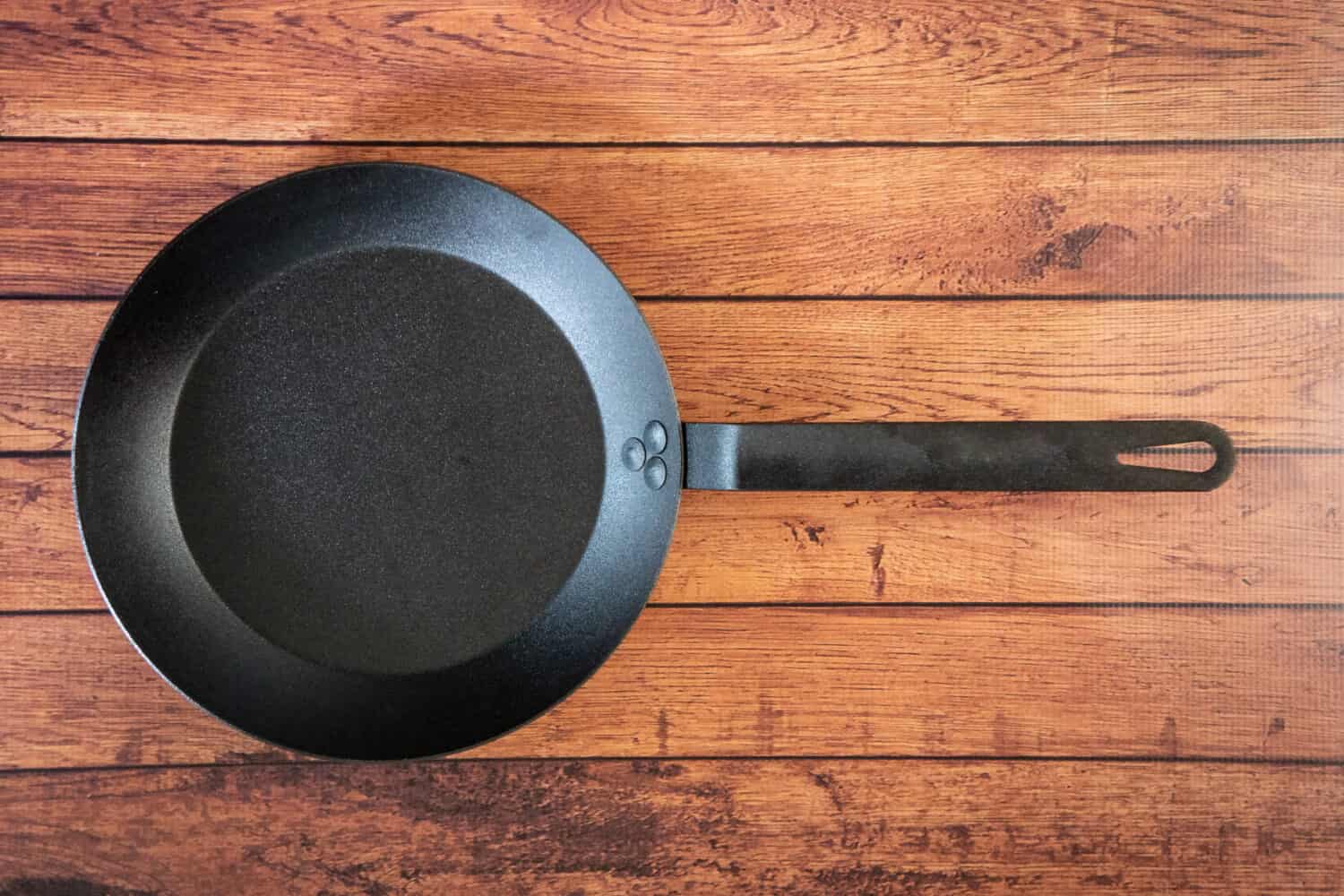There are plenty of different opinions on what type of cookware is the best for everyday use and those who are passionate about cooking often have strong opinions on which type of cookware is superior. If you’re looking into new kitchen tools, two of the types of cookware you might compare are carbon steel vs. stainless steel.
The main difference between carbon steel vs stainless steel is their thermal conductivity. While carbon steel heats unevenly and slowly, stainless steel cookware is often combined with aluminum or copper materials to make it heat quickly and evenly. Stainless steel is also lighter than carbon steel.
To determine which type of cookware is best for your needs, it’s important to know the pros and cons of each type. Keep reading to find out more about the difference between carbon steel and stainless steel.

©Studio113/Shutterstock.com
Carbon Steel vs. Stainless Steel: What Is the Difference?
From aluminum to titanium to stainless steel, there are numerous types of cookware out there with a variety of different uses. Whether you want to invest in a new set of cookware or you’re simply learning about different kitchen tools, you might have wondered about the difference between carbon steel and stainless steel.
While stainless steel is the type of cookware you'll see most often, carbon steel can also be a great option depending on what you plan on cooking. When compared to stainless steel, carbon steel doesn’t heat as quickly or as evenly. While stainless steel on its own has poor heat conductivity, stainless steel cookware is usually clad with aluminum or other materials to make it a stronger tool in the kitchen.
What Is Carbon Steel?
Carbon steel cookware is made of a combination of iron, silicone, copper core, and other metals. While carbon steel does contain iron, it doesn’t contain as much as cast iron, which makes it a lighter-weight option.
Many who use carbon steel compare its abilities to that of cast iron, but it’s much lighter and more convenient to use. Like cast iron, you can use carbon steel on the stovetop as well as in the oven, which makes it perfect for cooking and searing meat.
As far as heat conduction, it does heat up faster than cast iron. Like cast iron and stainless steel, carbon steel doesn’t naturally have a non-stick surface so it does require seasoning as well.
Compared to stainless steel, carbon steel is more likely to corrode, even though this type of cookware is still a durable choice.
What Is Stainless Steel?
Stainless steel is a popular type of cookware and you’ll often see professional chefs using it in their kitchens. While there are numerous types of stainless steel, this type of cookware is made of steel and chromium and is an incredibly durable and versatile kitchen tool.
Professional chefs often use fully clad stainless steel and while this type of cookware does take some skill to use, it can be beneficial for use in any kitchen.
However, fully clad stainless steel is only one of the varieties. If you’re looking into types of stainless steel, you’re likely to run into the 200, 300, and 400 series of stainless steel since food-grade stainless steel must belong to one of these according to standards by NSF International.
Each of these series contains a different combination of material. The 400 series, for example, is nickel-free and you'll usually find it in silverware or mixing bowls. The most commonly used type of stainless steel in cookware is the 300 series.
This type of stainless steel is non-reactive, so you can even use it when cooking with acidic ingredients. No matter what your level of experience is, stainless steel is a great option to have in your kitchen.
Main Differences Between Carbon Steel and Stainless Steel
If you’re trying to decide whether you should choose carbon steel or stainless steel for your kitchen, let’s take a look at the main differences between them:
- Carbon steel has better non-stick properties
Neither carbon steel nor stainless steel cookware is naturally non-stick, but you will find that stainless steel is still more prone to stickiness. Both can be seasoned and when you get used to cooking properly with them, food sticking won’t be an issue. - Carbon steel heats better
Stainless steel cookware is known for its poor heat conduction, however, it does distribute the heat across the cooking surface in a uniform way. Carbon steel cookware is better for heat conduction and stays warm for a while like cast iron. - Stainless steel is better for sautéing
Which type of cookware is better is going to depend on what you’re using it for. While carbon steel cookware is a great kitchen tool, it's suited for different purposes than stainless steel. Stainless steel is better for sauteing since it requires a lower temperature for a longer period of time. - Stainless steel is lighter than carbon steel
When using carbon steel as an alternative to cast iron, it can seem pretty lightweight since it’s much lighter than cast iron. However, carbon steel is still heavier than stainless steel, which may impact your cooking depending on how you’re using it in the kitchen.
Both carbon steel and stainless steel have their benefits and downsides, but one may stand out as a better alternative to you, depending on what your needs are.
Which Is Safer to Use: Carbon Steel or Stainless Steel?
Considering how many options are out there, safety is also a factor to consider when you’re choosing the right cookware for your kitchen. Carbon steel is a hybrid between stainless steel and cast iron cookware. It has many of the benefits of cast iron while also sharing some of the pros of stainless steel.
One of the reasons why cast iron is so popular is that, unlike aluminum non-stick pans, it doesn’t contain any synthetic ingredients. When there’s a non-stick coating on your cookware, safety does become a concern, especially if the non-stick coating starts to peel off.
Both carbon steel and stainless steel pans are non-toxic, and are both safe for cooking, even at higher temperatures. Since genuine stainless steel cookware doesn’t have the Teflon coating, it’s safe to use and doesn’t have any potential harm nor do you have to worry about the coating peeling off into your food.

©Maryia_K/Shutterstock.com
Are Carbon Steel and Stainless Steel Reactive?
The other concern when it comes to the safety of your cookware is the potential chemical reaction. With certain cooking materials, a chemical reaction occurs when you use acidic ingredients. Like cast iron, carbon steel is reactive, while stainless steel isn’t.
Carbon steel is still safe to cook with, but it’s best to avoid using acidic ingredients with your carbon steel. When the metal reacts to specific ingredients, it releases atoms of metal into the food, which can often give it an off taste. Certain ingredients or foods can also lead to an off-color when cooking with carbon steel.
Is Carbon Steel Better Than Stainless Steel for Cooking?
Both carbon steel and stainless steel are durable and a high-quality brand of either will last you forever. Stainless steel is much lower maintenance than carbon steel since you can place it in the dishwasher and it often comes with a lifetime warranty.
Carbon steel pans are more affordable than a high-quality or fully clad stainless steel pan, but there are more benefits to stainless steel than carbon steel. Carbon steel is an excellent alternative to cast iron if you’re looking for something lightweight, but stainless steel cookware is going to offer more versatility in the kitchen.
The image featured at the top of this post is ©Jaimieandkyleshootstock/Shutterstock.com.
